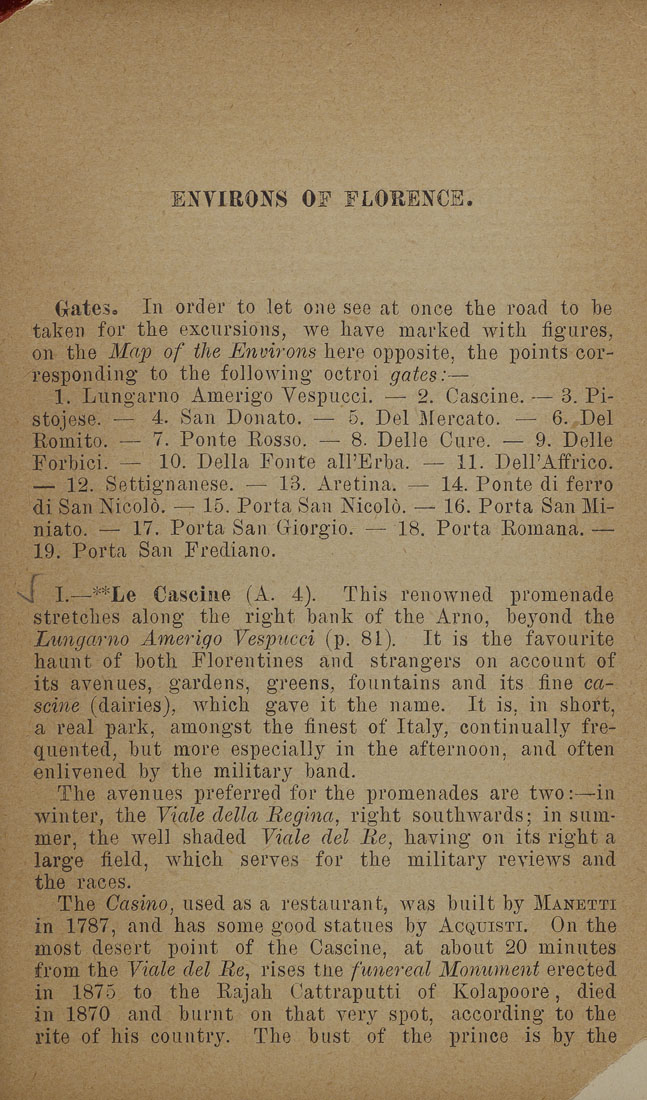w
EXYIRONS OF FLORENCE
GrateSo In order to let one see at once the road to be
taken for the excursions, we have marked Avith figares,
on the Map of the Environs here opposite, the points cor-
responding to the following octroi gates:—
1, Lungarno Amerigo Vespucci, — 2. Cascine, — 3. Pi-
stojese. — 4. San Donato, — 5, Del Jilercato. — 6. Del
Romito. — 7. Ponte Pvosso. — 8. Delle Cure. — 9. Delle
Forbici. — 10. Della Fonte all'Erba. — 11. Dell'Affrico.
— 12. Settignanese. — 13. Aretina. — 14. Ponte di ferro
di San Nicolò. — 15. Porta San Nicolò, — 16, Porta San Mi¬
niato. — 17, Porta San Giorgio, — 18, Porta Romana. —
19. Porta San Frediano.
I,—•''''''Le Cascine (A. 4). This renowned promenade
stretches along the right bank of the Arno, bejond the
Lungarno Amerigo Vespucci (p. 81). It is the favourite
haunt of both Florentines and strangers on account of
its avenues, gardens, greens, fountains and its fine ca¬
scine (dairies), Avhich gave it the name. It is, in short,
a real park, amongst the finest of Italy, continually fre-
quented, but more especially in the afternoon, and often
enlivened by the màlitary band.
The avenues preferred for the promenades are tAvo:—in
winter, the Viale della Regina, right southAvards; in sum¬
mer, the Avell shaded Viale del Re, having on its right a
large field, which serves for the military reAÙCAvs and
the races.
The Casino, used as a restaurant, Avas built by Manetti
in 1787, and has some good statues by Acquisti. On the
most desert point of the Cascine, at about 20 minutes
from the Viale del Re, rises the funereal Monument erected
in 1875 to the Rajah Cattraputti of Kolapoore, died
in 1870 and burnt on that very spot, according to the
l'ite of his country. The bust of the prince is by the
|








